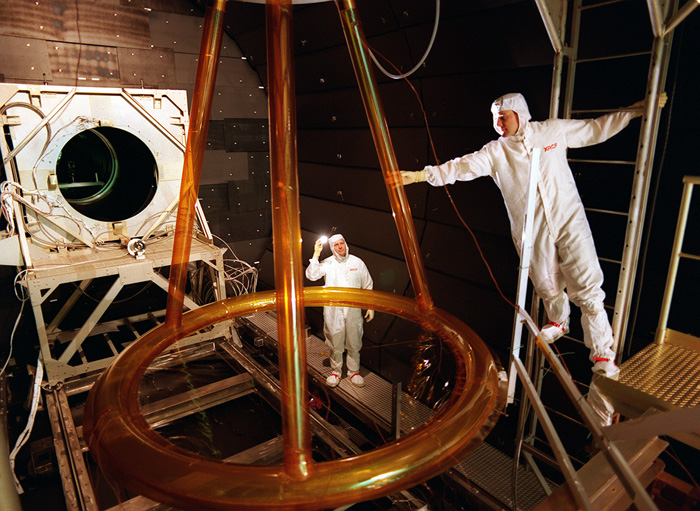Space History Photo: Shooting Star Experiment

In this historical photo from the U.S. space agency, the Shooting Star Experiment (SSE) is designed to develop and demonstrate the technology required to focus the Sun's energy and use the energy for inexpensive space propulsion research. Pictured is an engineering model (Pathfinder III) of SSE and its thermal vacuum test to simulate in-orbit conditions at the X-Ray Calibration Facility at the Marshall Space Flight Center (MSFC). This model was used to test and characterize the motion and deformation of the structure caused by thermal effects.
In this photograph, alignment targets are being placed on the engineering model so that a theodolite (alignment telescope) could be used to accurately measure the deformation and deflection of the engineering model under extreme condition, such as the coldness of deep space and the hotness of the Sun, as well as vacuum.
Each weekday, SPACE.com looks back at the history of spaceflight through photos (archive).
Get the Space.com Newsletter
Breaking space news, the latest updates on rocket launches, skywatching events and more!
Join our Space Forums to keep talking space on the latest missions, night sky and more! And if you have a news tip, correction or comment, let us know at: community@space.com.

The National Aeronautics and Space Administration (NASA) is the U.S. government agency in charge of the civilian space program as well as aeronautics and aerospace research. Founded in 1958, NASA is a civilian space agency aimed at exploring the universe with space telescopes, satellites, robotic spacecraft, astronauts and more. The space agency has 10 major centers based across the U.S. and launches robotic and crewed missions from the Kennedy Space Center in Cape Canaveral Florida. It's astronaut corps is based at the Johnson Space Center in Houston. To follow NASA's latest mission, follow the space agency on Twitter or any other social channel, of visit: nasa.gov.









